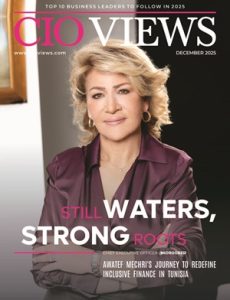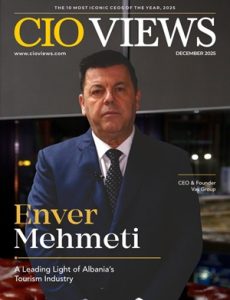In an era when hospital closures are becoming alarmingly common, Valley Children’s Healthcare is charting a different course. Under the leadership of President and CEO Todd Suntrapak, the organization is pioneering an innovative approach to financial sustainability through The Hill — a 220-acre mixed-use development that promises to reshape how nonprofit hospitals secure their future while serving their communities.
“Our patients and families need more than a hospital and we need to ensure there is a sustainable financial future for Valley Children’s,” Suntrapak explains. The Hill represents his vision for meeting that challenge head-on — creating a vibrant, revenue-generating community that will support hospital operations far into the future.
In addition to the microgrid power project that ensures uninterrupted power and resilience, The Hill is part of a broader strategy of progressive initiatives designed to strengthen both the hospital’s financial foundation and the health of the community it serves.
A Bold Vision for Healthcare Sustainability
The Hill transforms Valley Children’s 443-acre main campus into something unprecedented in pediatric healthcare. When complete, this mixed-use development will integrate five distinct districts surrounding the Healthcare District, which houses Valley Children’s Hospital, River Vista Behavioral Health and clinical research and administrative facilities.
The scope is ambitious. Over 400 residential units ranging from studios to three-bedroom apartments in a wellness-centric environment, more than 30 shops in a village-style retail district including a grocery store and lofts above retail spaces, hospitality and recreation facilities and scenic walking paths connecting various venues and activity areas.
But The Hill’s true innovation lies in its purpose. Generating sustainable revenue to support pediatric healthcare while creating a community that enhances the lives of patients, families, staff and residents.
Suntrapak’s role in bringing The Hill to life draws on more than 25 years of leadership at Valley Children’s. His background in strategy, clinical operations and business development has positioned him to see what many healthcare leaders miss: that financial sustainability and exceptional patient care are not competing priorities but complementary ones.
“The Hill is a community that supports healthy living, the health of Valley Children’s and the care we provide to kids and the entire community,” he says.
The development timeline represents years of careful planning and community engagement. After spending the last decade building a solid financial foundation — one that has earned Valley Children’s an AA rating from Standard & Poor’s and recognition as one of the nation’s “Best Children’s Hospitals” — Suntrapak and his team are now poised to execute a vision that will secure the hospital’s future for generations to come.
Investing in Long Term Resilience
The challenges facing nonprofit healthcare are stark. Between 2018 and 2023, 117 acute care hospitals closed across the United States, with 19 more hospitals and emergency departments shutting their doors just this year. In California’s Central Valley, the crisis hit particularly close to home when Madera Community Hospital closed, leaving a gap in local healthcare access.
For Valley Children’s, these closures underscore a critical reality: traditional revenue streams from state and federal reimbursements and commercial insurance payouts are simply not enough to sustain world-class pediatric care.
Bringing Convenience and Comfort to Families
For families navigating the stress of a child’s hospitalization or treatment, The Hill offers tangible relief. When your child is receiving care at Valley Children’s, the last thing you need is a long drive to find basic necessities or a comfortable place to stay.
The residential and hospitality districts will provide convenient housing options for families who need to remain close to their children during extended treatments or recovery periods. Rather than searching for hotels miles away or struggling to find temporary housing in an unfamiliar area, families will have access to comfortable accommodations within walking distance of the hospital.
The retail district addresses another critical need: access to everyday essentials without leaving campus. A grocery store will allow families to prepare meals suited to their preferences and their children’s dietary needs.
Shops offering clothing, personal care items and other necessities mean parents can replace forgotten items or respond to unexpected needs without the added burden of navigating to unfamiliar stores across town.
Beyond practicality, The Hill’s design fosters wellness and respite. The scenic walking paths and outdoor recreation areas provide spaces where families can decompress, siblings can play and parents can find moments of calm amid challenging circumstances. These amenities recognize that supporting a child through illness or injury requires caring for the whole family’s wellbeing.
Strengthening the Broader Community
The Hill’s impact extends far beyond the hospital campus, offering significant benefits to Madera County and the surrounding region. As Madera County Board of Supervisors Chair Rob Poythress notes, “Madera County is excited about the opportunity to help Valley Children’s move forward with this development.”
The economic impact will be substantial. The development will generate new tax revenue for local and state governments, resources that can be reinvested in schools, infrastructure and public services. New retail and hospitality businesses will create jobs and career opportunities for local residents. Increased tourism and visitor spending will ripple through the local economy, supporting existing businesses and attracting new ones.
Perhaps most significantly, The Hill contributes to community resilience. In regions where hospitals are closing and healthcare access is shrinking, Valley Children’s is expanding, creating not just a hospital but an ecosystem of health, commerce and community life. The wellness-centric design of The Hill, with its emphasis on walkability, outdoor spaces and healthy living, reflects Suntrapak’s commitment to addressing children’s health where they live, learn and play.
This approach aligns with Valley Children’s broader community investments, including the Center for Community Health funded by a $5 million endowment and nearly $1 million in annual support for local programs affecting children’s health. The Hill extends this commitment by creating an environment that promotes wellness for everyone who lives, works or visits there.
A Model for Healthcare Resilience
Valley Children’s experience offers important lessons for hospitals nationwide grappling with financial pressures and sustainability challenges. The Hill demonstrates that diversified revenue streams can provide the stability that traditional healthcare reimbursement cannot.
When hospitals rely solely on patient care revenue, they remain vulnerable to policy changes, reimbursement cuts and economic downturns. The Hill creates multiple revenue streams that can help stabilize operations during healthcare market fluctuations. This diversification doesn’t replace patient care revenue but supplements it, providing a buffer against the forces that have driven so many hospitals to close.
The model also addresses a fundamental challenge in nonprofit healthcare: how to invest in facilities, technology and staff when margins are razor-thin. Revenue from The Hill will flow directly into supporting hospital operations and patient care, enabling Valley Children’s to maintain its world-class facilities, attract top talent and continue expanding access to pediatric specialty care across the Central Valley’s 1.3 million children.
Suntrapak’s leadership illustrates another critical element: making decisions based on what’s best for patients and families. “The right decisions are those that are best for our kids,” he often says. The Hill succeeds because it serves patients and families first while simultaneously securing the hospital’s financial future — proof that these goals need not conflict.
Building a Sustainable Future for Pediatric Care
The Hill represents more than real estate development. It’s a comprehensive strategy for ensuring that Valley Children’s Healthcare can continue delivering exceptional care for decades to come, even as the broader healthcare landscape grows more challenging.
By creating a mixed-use community that generates sustainable revenue, Valley Children’s is building resilience against the forces that have closed 117 hospitals in recent years. By designing that community around wellness, convenience and family needs, the hospital is extending its mission beyond clinical care to address the broader determinants of children’s health.
For other nonprofit hospitals watching facilities close around them, The Hill offers a roadmap. Diversifying revenue, investing in community, planning for long-term sustainability — these aren’t distractions from healthcare’s core mission but essential strategies for preserving it. As Suntrapak and Valley Children’s demonstrate, securing your hospital’s future and serving your patients well are not competing priorities. Done right, they’re the same thing.





